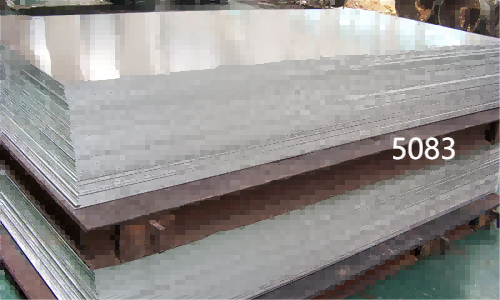The choice of aluminum plate for various applications is critical, particularly in industries where strength, corrosion resistance, and machinability are paramount. Two commonly used aluminum alloys are 5083 and 6061, each offering distinct properties that make them suitable for specific applications. This article explores whether 5083 aluminum plate can be replaced by 6061 aluminum plate, examining the properties, advantages, and typical uses of each alloy.
Properties of 5083 Aluminum Plate
5083 aluminum plate is known for its exceptional performance in extreme environments, particularly where high strength and excellent corrosion resistance are required. Key properties include:
1.High Strength: 5083 aluminum alloy has one of the highest strengths among non-heat-treatable alloys. It retains excellent mechanical properties even in the annealed (O) condition.
2. Corrosion Resistance: This alloy exhibits superior corrosion resistance, particularly in marine environments. It is highly resistant to seawater and industrial chemicals.
3. Weldability: 5083 is known for its excellent weldability, making it a preferred choice for applications requiring strong welded joints.
4. Formability: This alloy offers good formability, which is beneficial for manufacturing processes that require shaping and forming.
Typical applications of 5083 aluminum plate include marine structures, pressure vessels, and cryogenic applications due to its strength and resistance to harsh environments.

Properties of 6061 Aluminum Plate
6061 aluminum plate is one of the most versatile and widely used heat-treatable aluminum alloys. Its properties include:
1. Good Strength-to-Weight Ratio: 6061 offers a balanced combination of strength and weight, making it ideal for structural applications.
2. Corrosion Resistance: While not as corrosion-resistant as 5083, 6061 still provides good resistance to corrosion, particularly in atmospheric conditions.
3. Machinability: 6061 is renowned for its excellent machinability, which makes it suitable for precision machining and fabrication.
4. Weldability and Formability: 6061 can be welded and formed relatively easily, although care must be taken to avoid cracking during welding.
Common applications of 6061 aluminum plate include automotive parts, aerospace components, and structural applications where machinability and moderate corrosion resistance are needed.

Comparing 5083 and 6061 Aluminum Plates
While both 5083 and 6061 aluminum plates have their merits, their suitability for replacement depends on the specific requirements of the application. Here are some considerations:
1. Strength and Corrosion Resistance: If high strength and superior corrosion resistance, especially in marine environments, are critical, 5083 is the better choice. 6061, while strong, does not match the corrosion resistance of 5083 in harsh environments.
2. Machinability and Versatility: For applications requiring extensive machining or versatility in structural applications, 6061 is often preferred due to its excellent machinability and good strength-to-weight ratio.
3. Weldability: Both alloys are weldable, but 5083 excels in applications requiring strong welded joints in corrosive environments. 6061 can be welded effectively but requires careful handling to avoid issues such as cracking.
4. Application-Specific Requirements: The decision to replace 5083 with 6061 should be based on a thorough assessment of the application’s specific requirements, including environmental conditions, mechanical stress, and fabrication processes.
Conclusão
In conclusion, while 6061 aluminum plate can replace 5083 in certain applications, it is not a straightforward substitution due to the distinct properties of each alloy. 5083 is preferred for high-strength, corrosion-resistant applications, particularly in marine and harsh environments. In contrast, 6061 is favored for its machinability, versatility, and good strength-to-weight ratio in structural and precision machining applications. The choice between these two alloys should be guided by the specific demands of the application, ensuring that the selected material meets all performance and durability requirements.


